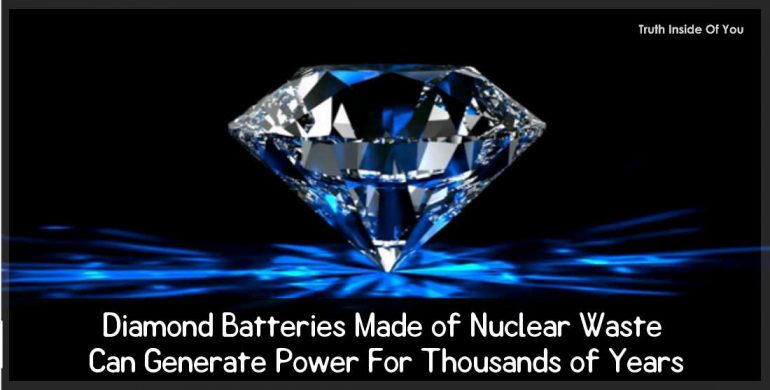An ingenuous technology has been developed by scientists that help in the conversion of nuclear plant waste into diamond batteries that are highly sustainable. These batteries are capable of powering satellites, spacecraft and medical devices in a safe and clean manner.
The University of Bristol Cabot Institute and its team of scientists have designed an ingenious method in their lab. With their lab-made diamond, they can now generate electricity. It is a result of upcycled radioactive waste.

The process of Nuclear Fission is used in nuclear power plants for the splitting of radioactive uranium. Heat is generated with the splitting of atoms. Water is vaporized to produce steam, which operates turbines that generate electricity. However, there is a significant downside to the process – which is that it creates dangerous radioactive waste. This waste gets deposited onto graphite core. It is nuclear contamination and it is stored until it is not processed into being radioactive.
The scientists have discovered a process for heating the radioactive graphite for the release of the majority of radioactivity in the form of gas. The volatile substance is then put forth through low pressures and high temperature for the formation of diamonds. The diamonds – when placed close to the radioactive field – start generating a small amount of electrical current.
The lifespan of a nuclear diamond battery is incredible. Half the energy is projected for consumption by 7746 – making the technology an amazing power solution and a great replacement for conventional batteries. The battery can power-up planes, spacecraft and satellites, as well as, medical equipment, like pacemakers. The innovation is also an effective way of treating radioactive waste.
It’s not an easy task to supply electricity to the world and managing sustainability at the same time. With the nuclear-powered diamond batteries – it seems experts are on the right path towards sustainable and revolutionized electricity generation.
For more info click here. (futurism.com)










Amazing
Can they be put on a wedding band?
are they radio active?